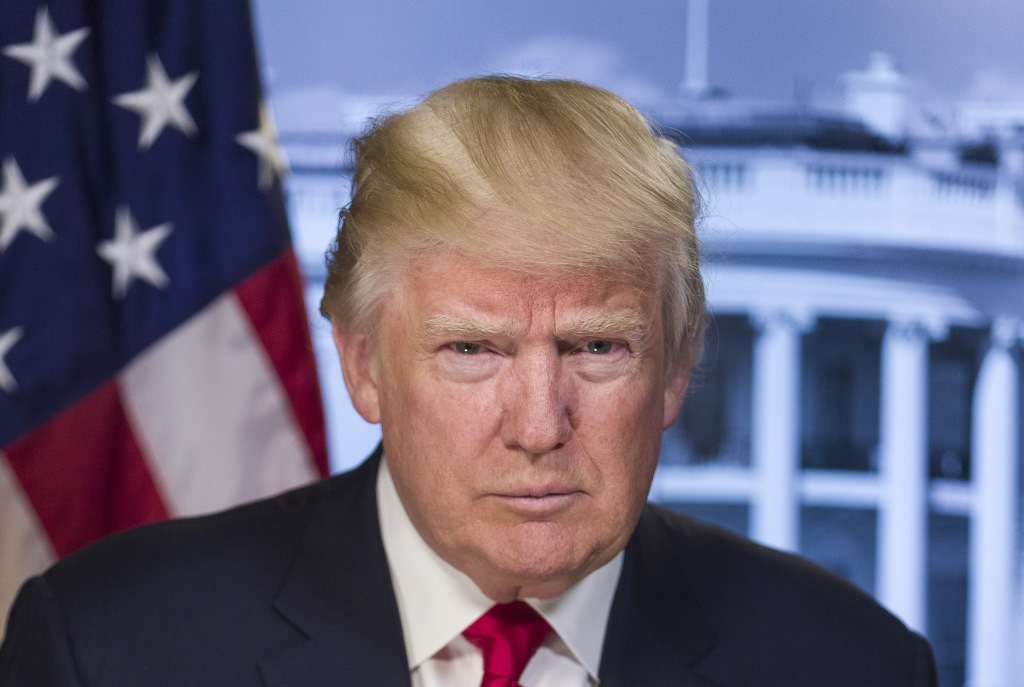Trump’s Flights of Fancy at Rally
President's speech in Milwaukee filled with exaggerations and made-up numbers.
He promised to protect people with pre-existing conditions, while his administration pursues a lawsuit to throw out the Affordable Care Act that protects people with pre-existing conditions.
He insisted unemployment had hit the lowest point in history at 3.3 percent — ignoring that it was less than half that toward the end of World War II.
He bragged that annual household incomes were up by $10,000 since he took office. Census Bureau data peg the number at $1,400.
Donald Trump’s Milwaukee campaign visit Tuesday night was his standard farrago of cheerleading braggadocio, fear-mongering fiction and all-around mockery, to the cheers of a boisterous crowd that applauded his boasts and laughed at his nicknames for Democrats who were that same evening holding their latest debate before the Iowa caucus that will help determine which of them will get to face him in November.
When he did turn to the economy, one key to Trump’s performance appeared to be just enough restraint to know when to stay at least within grabbing distance of the facts and when to willingly embark on flights of fancy.
Take the boast of “a $40 billion trade deal with Japan — and a lot of it has to do with farmers” — a pitch to Wisconsin’s agricultural base.
Indeed, that’s the estimate that has been bandied about in press reports on the overall value of the trade agreement announced in September in Japan. It will phase in a $7.5 billion reduction in Japanese tariffs on American farm products while the U.S. cuts tariffs on imported Japanese manufactured goods.
Yet, according to Japanese media reports, opposition lawmakers question the Japanese government’s own claim of $37 billion in Gross Domestic Product gains.
Or consider his claim of 7 million new jobs in his first three years, 1 million of them in manufacturing: “Nobody thought that was possible.”
While the numbers are about right, they are far from impossible: the accomplishment falls short of the last three years President Barack Obama was in office.
Repeatedly Trump lauded his own administration for the continued economic expansion that has been underway since the middle of Obama’s first term — framing it as a sea change rather than a continuation of a trend that started under his predecessor.
“As we begin the year, our economy is booming, wages are rising, poverty is plummeting, crime is falling and America is the envy of the entire world!” Trump said to cheers.
Indeed, wages, more easily measured in weekly earnings, have been creeping up — roughly 1 percent in the last year, according to the Bureau of Labor Statistics, continuing a trend that began under Obama. Poverty is down, by about half of a percentage point, according to the U.S. Census Bureau, continuing a decline that started back in 2014. Yet the decrease seems hardly to suit the adjective “plummeting” by any objective measure.
Those and other data points fed Trump’s message about an economic boom — one that took no note of data such as the recent uptick in mass layoffs reported to the state. (Interestingly, Trump also made no mention of FoxConn, the electronics manufacturer lured to Southeastern Wisconsin with a Trump-enhanced fanfare and the promise of thousands of high-salary jobs but that instead has produced persistent disappointment.)
Such nuances were absent inside the Panther Arena in downtown Milwaukee as Trump caromed from taking credit for the continued economic expansion to railing against the Affordable Care Act and economic regulation. On that theme his exaggerated claims about the difficulty of disposing of economic compact fluorescent light bulbs and hyberbolic and unsupported accounts of malfunctioning high-efficiency dishwashers, faucets, and showers veered into a Seinfeld-esque stand-up routine.
In a much darker tone, Trump turned to an invented, massive crime wave by undocumented immigrants, extrapolating without evidence from a pair of arrests, one in Milwaukee and one in Madison.
By the end of his talk, he had swung back into classic campaign mode, drawing more cheers with promises to “make America wealthy,” “proud,” “safe,” then finally, “and yes, great.”
As he left the stage to cheers, the loudspeakers came up with music from the Rolling Stones.
The song was, “You can’t always get what you want.”
Reprinted with permission of Wisconsin Examiner.





















It is now increasingly clear that if you have seen one Trump rally, you have pretty much seen them all. Even the virtually all-white crowds look the same regardless of the location. With respect to Erik Gunn’s reference to “flights of fancy,” there are two relevant quotes. One is from the old political pundit Malcolm Muggeridge who once said, “People don’t believe lies because they have to, but because they want to.” Or, as George Costanza of Seinfeld said, “It’s not a lie if I believe it.” The Republican base doesn’t care that these are lies, or the believe them because they have already heard them on Fox News. And elected Republicans find it convenient to repeat them as well, or, at a minimum, they don’t have the courage to contradict Donald Trump’s lies. They want to believe them because they fit the narrative that meets their needs..
After the “flights of fancy,” Mr. Gunn then refers to a “much darker tone.” That darker tone has a name, one that has sometimes been carelessly bandied about in the past. But Donald Trump, his party and his most ardent followers are a case of “If the shoe fits….” In his book “The Anatomy of Fascism,”( pages 218-220), Roberto O. Paxton says “Fascism may be defined as a form of political behavior marked by obsessive preoccupation with community decline, humiliation, or victimhood and by compensatory cults of unity, energy and purity….” The ideas of fascism belong more to the realm of visceral feelings than to the realm of reasoned propositions.”
Here are some of the ideas that drive that political behavior:
* “a sense of overwhelming crisis beyond the reach of any traditional solutions”
* “the primacy of (our) group, to which one has duties superior to every right” and “the belief that one’s group is a victim, a sentiment that justifies any action….”
* “dread of the group’s decline under the corrosive influence of individualistic liberalism, class conflict, and alien influences”
* “the need for authority by natural chiefs (always male), culminating in a national chieftain who alone is capable of incarnating the group’s historical destiny” and “the superiority of the leader’s instincts over abstract and universal reason”
*” the beauty of violence and the efficacy of will, when they are devoted to the group’s success”
* “the right of the chosen people to dominate others….”
Not a perfect fit, but a pretty good description of those “much darker tones.”
One reason why all these Trump rallies look the same from one city to another is that they are populated by people from all over the country, who follow Trump rallies like Deadheads follow “Grateful Dead” concerts. The % of locals at these rallies may range from moderate to miiniscule.. Trump’s deference to his base is central to his “modus operandi,” but that base is smaller than he pretends it is when you factor in the large % of groupies from elsewhere who routinely attend Trump rallies,